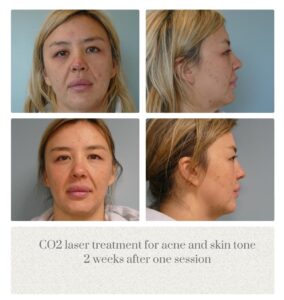As a plastic surgeon at Oregon Cosmetic and Reconstructive Clinic, I see patients who feel frustrated with acne scars that linger long after breakouts fade. These scars can take different forms, and understanding what type you have helps us choose the best treatment plan.
Different Types of Acne Scars
Acne scars aren’t all the same. They vary in depth, texture, and color. Here’s how I usually describe them to patients:
-
Skin surface irregularities – uneven skin texture or small dents.
-
Hyperpigmentation – dark spots left behind after acne heals.
-
Ice pick scars – narrow, deep scars that look like tiny pinpoints.
-
Boxcar scars – shallow, round or oval depressions at the skin’s surface.
-
Atrophic scars with tethering – deeper scars where skin looks “pulled down” due to dense scar tissue or volume loss.
Each type forms in its own way, so treatment needs to match the scar’s structure.
How I Treat Acne Scars
Over time, I’ve found that the best results often come from combining treatments that target different scar layers. Here’s how I approach it:
1. Resurfacing the Skin
For uneven skin and discoloration, I use a CO₂ laser combined with microneedling.
This approach gently removes damaged skin layers while stimulating collagen growth underneath. It smooths surface irregularities and softens shallow depressions, helping the skin reflect light more evenly. 
2. Releasing Deep Scar Tethering
When scars pull the skin down, I use a technique called subcision.
With a fine needle-like tool, I carefully release the fibrous bands that anchor the scar. This allows the skin to lift naturally and creates space for new collagen to form.
3. Restoring Lost Volume
For deeper atrophic scars, adding hyaluronic acid filler can help restore balance.
This step fills in the deeper “valleys” and smooths transitions between scarred and healthy skin. It’s especially effective when combined with subcision or resurfacing.
Why a Tailored Approach Matters
Every patient’s skin heals differently. That’s why I focus on personalized treatment plans—sometimes starting gently with resurfacing before adding volume or subcision later. My goal is always natural-looking, healthy skin that reflects light smoothly and helps you feel confident again.
If you’d like to learn more about skin rejuvenation options, explore our laser and skin treatments or fillers and injectables at Oregon Cosmetic and Reconstructive Clinic.

